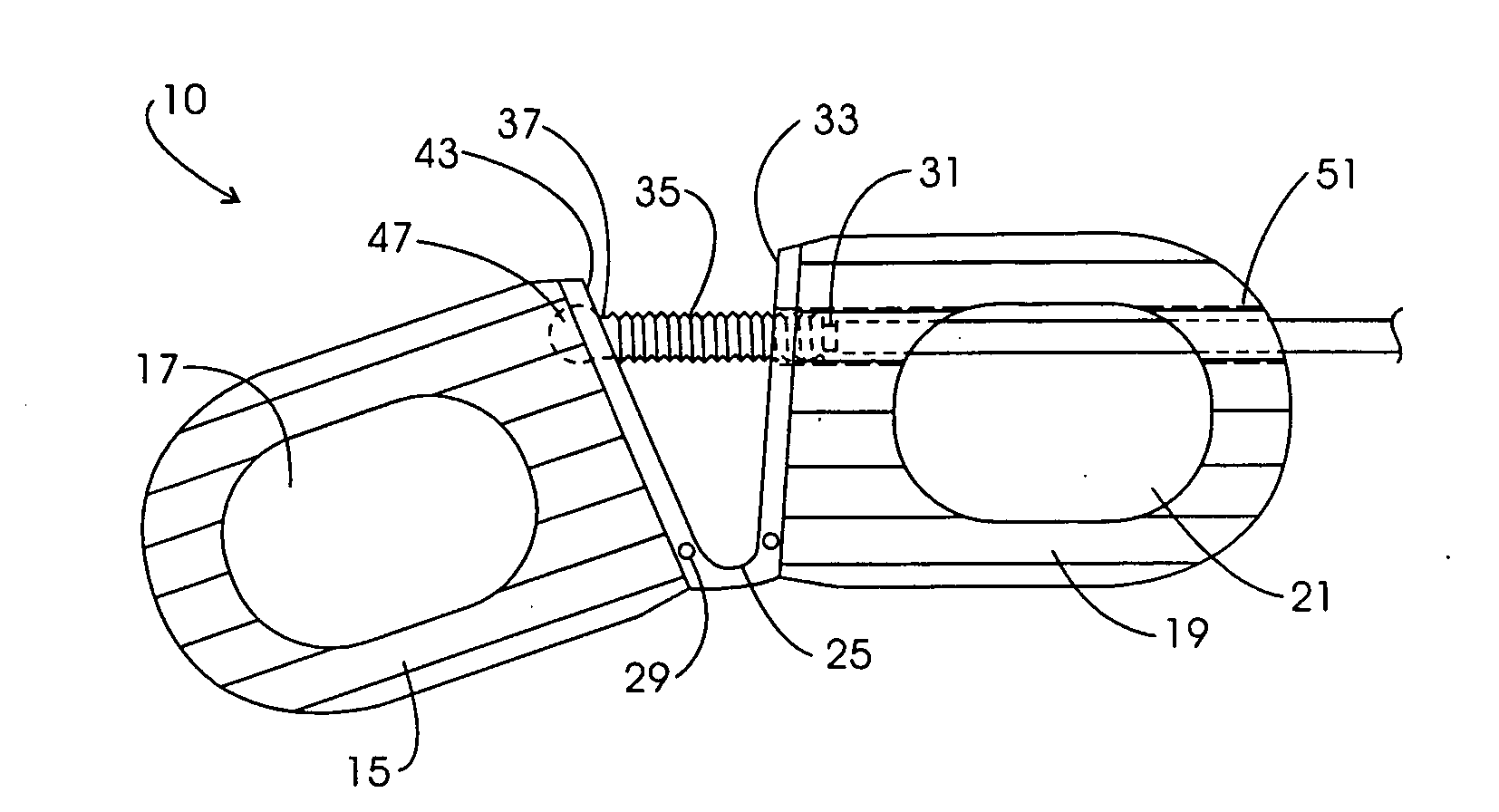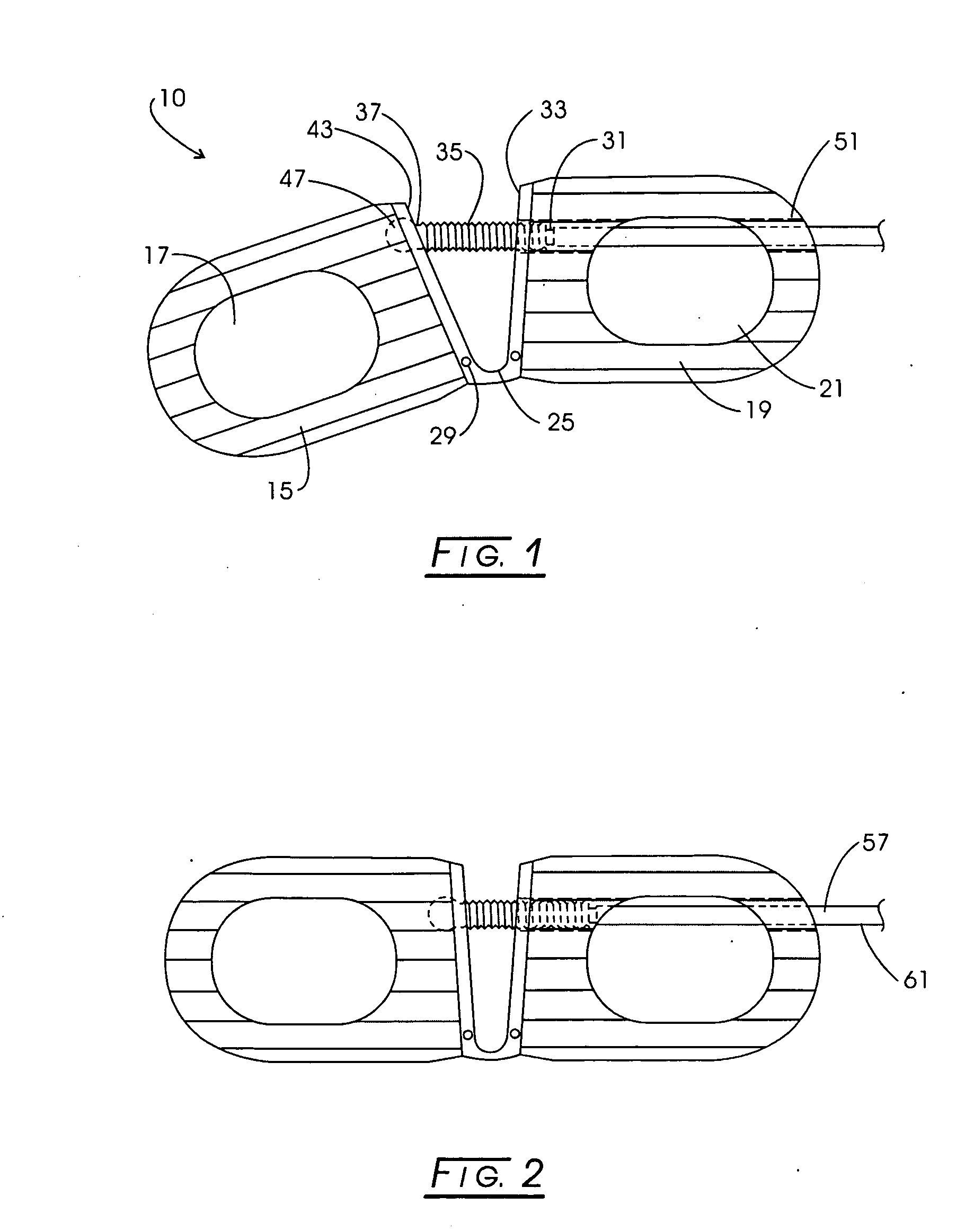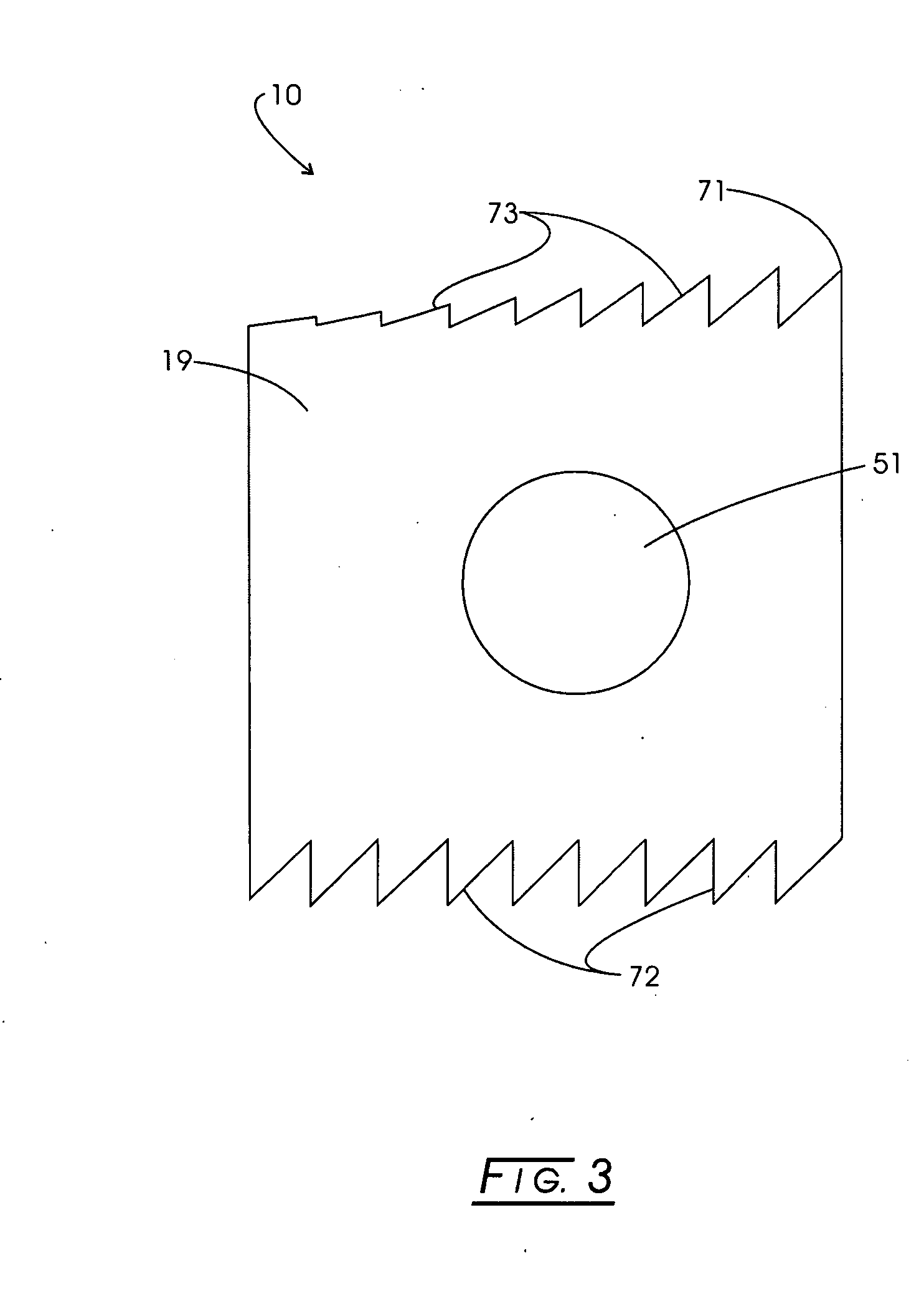Transforaminal lumbar interbody fusion cage
a lumbar interbody and cage technology, applied in the field of orthopedic surgery, can solve the problems of difficult insertion of a fusion cage, and the prior art's need for considerable space to be rotated, and achieve the effects of reducing the need for dislocation, facilitating the insertion of the cage, and less room
- Summary
- Abstract
- Description
- Claims
- Application Information
AI Technical Summary
Benefits of technology
Problems solved by technology
Method used
Image
Examples
Embodiment Construction
[0028]The present disclosure is directed to an interbody fusion cage assembly that is used in spinal fusion procedures, such as a transforaminal lumbar spinal fusion procedure, by way of example. More particularly, the present disclosure is directed to an articulated fusion cage assembly that can be adjusted in configuration to facilitate the insertion of the cage assembly between adjacent vertebrae in the spine, such as the lumbar region. The fusion cage assembly of the present disclosure may be inserted by the use of minimally invasive surgical techniques wherein relatively small incisions are made in the patient and instruments are utilized to guide the cage assembly to the desired location between adjacent vertebrae. The articulated nature of the cage assembly allows the cage assembly to be disposed at an angle that facilitates the insertion of the cage assembly around the neural elements and reduces the displacement or impact on the nerve roots during the insertion process.
[002...
PUM
 Login to View More
Login to View More Abstract
Description
Claims
Application Information
 Login to View More
Login to View More - R&D
- Intellectual Property
- Life Sciences
- Materials
- Tech Scout
- Unparalleled Data Quality
- Higher Quality Content
- 60% Fewer Hallucinations
Browse by: Latest US Patents, China's latest patents, Technical Efficacy Thesaurus, Application Domain, Technology Topic, Popular Technical Reports.
© 2025 PatSnap. All rights reserved.Legal|Privacy policy|Modern Slavery Act Transparency Statement|Sitemap|About US| Contact US: help@patsnap.com



